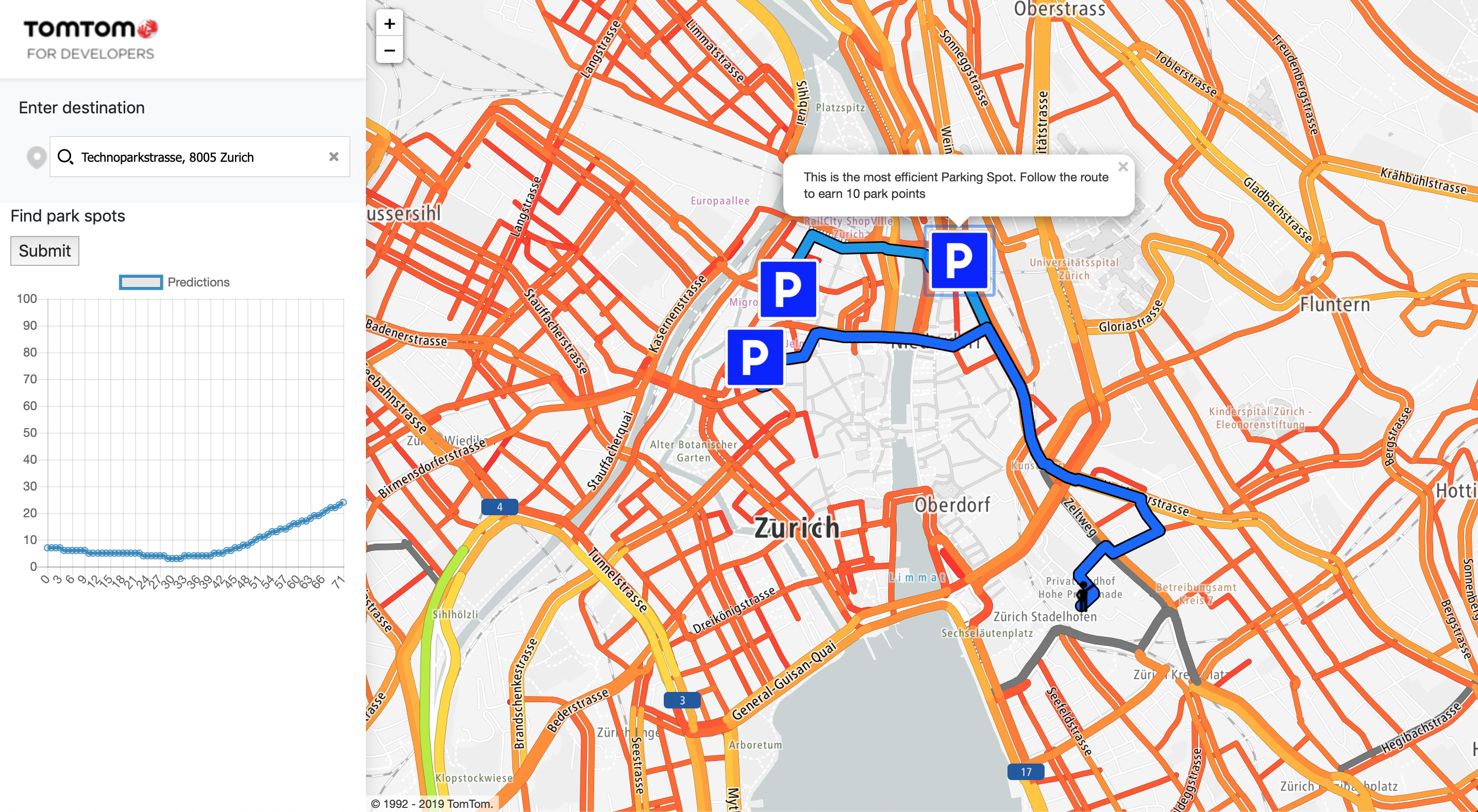HackZurich (https://digitalfestival.ch/en/HACK)
It uses trained time-series tensorflow models to predict real-time free parking spaces in the city of Zurich. Check our kick-off presentation. You can spin up the server via Node.js, and getting an API key from TOMTOM following the simple instructions here.
We used tensorflow and keras to train time-series dependent data to predict multiple points in the future. We used the Tom Tom API to load maps and connected the backend-frontend using node.js and json!
Connection of Front-end and Back-end. All the teams are proficient in Deep learning, NLP and computer vision but not so much with web development. There were some out-of-serive parking spots (0s in the data for a long time) we had to manually remove them to avoid dataset bias.
The models trained have very high accuracy and can predict up to 72 points in the future (around next ~12 hours) for all parking locations (Currently only 4 models)
LSTMs models (just 4 layers) are pretty good at learning time-series data.
Adding a Parking wallet where a person can gain parking points by choosing the most sustainble parking option. She can collect and redeem these points for some parking space.
